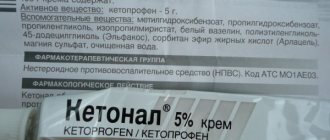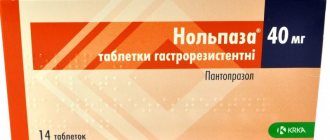Pharmacodynamics and pharmacokinetics
Pharmacodynamics
An antidepressant that selectively inhibits the reuptake of serotonin by the presynaptic membrane, therefore increasing the amount of this neurotransmitter and enhancing the serotonergic effect in the central nervous system. The effect is manifested in the elimination of anxiety and depression and appears after 7-14 days. Does not affect psychomotor functions, does not enhance the inhibitory effect of ethanol .
When conducting an EEG in patients taking the drug, a slight activation of the central nervous system was revealed. In healthy individuals it does not cause significant changes in blood pressure and heart rate.
Pharmacokinetics
When taken orally, it is well absorbed. Cmax in the blood is determined after 5.2 hours. After 7–14 days of daily intake of 30 mg of the drug per day, equilibrium concentration in the blood is achieved. 95% protein bound. Metabolized in the liver to inactive metabolites. Excreted by the kidneys (64%) and through the gastrointestinal tract (36%). T1/2 is 21 hours.
Adepress
Antidepressant. It is a selective inhibitor of serotonin (5-hydroxytryptamine, 5-HT) reuptake by brain neurons, which determines its antidepressant effect and effectiveness in the treatment of obsessive-compulsive (OCD) and panic disorder.
When paroxetine is metabolized, the selective uptake of 5-HT by neurons due to its action is not impaired.
Paroxetine has low affinity for m-cholinergic receptors.
Having a selective effect, unlike tricyclic antidepressants, paroxetine showed low affinity for α1-, α2-, β-adrenergic receptors, as well as dopamine, 5HT1-like, 5HT2-like and histamine H1 receptors.
Paroxetine does not disrupt psychomotor functions and does not potentiate the inhibitory effect of ethanol on them.
Based on behavioral and EEG studies, paroxetine exhibits weak activating properties when administered at doses above those required to inhibit 5-HT uptake. In healthy volunteers, it does not cause significant changes in blood pressure, heart rate and EEG.
Pharmacokinetics
Suction
Paroxetine is well absorbed after oral administration and undergoes first-pass metabolism through the liver.
Distribution
The equilibrium state is achieved 7-14 days after the start of therapy; subsequently, the pharmacokinetics do not change with long-term therapy. The clinical effects of paroxetine (side effects and efficacy) do not correlate with its plasma concentration.
Because paroxetine undergoes a first-pass effect through the liver, the amount detected in the systemic circulation is less than that absorbed from the gastrointestinal tract. When the dose of paroxetine is increased or with repeated dosing, partial absorption of the first-pass effect through the liver occurs and the plasma clearance of paroxetine decreases. As a result, there may be an increase in paroxetine plasma concentrations and fluctuations in pharmacokinetic parameters, which can only be observed in those patients who achieve low paroxetine plasma levels when taking the drug in low doses.
Paroxetine is extensively distributed in tissues, and pharmacokinetic calculations show that only 1% of it is present in plasma, with 95% bound to plasma proteins at therapeutic concentrations.
Metabolism
The main metabolites of paroxetine are polar and conjugated oxidation and methylation products that are quickly eliminated from the body, have weak pharmacological activity and do not affect its therapeutic effect.
Removal
The elimination of paroxetine metabolites from the body is biphasic, initially as a result of a “first pass” through the liver, and then it is controlled by systemic elimination. T1/2 of paroxetine varies, but is usually about 1 day.
Urinary excretion of unchanged paroxetine is usually less than 2% of the dose, with metabolites accounting for about 64% of the dose. The intestine excretes approximately 36% of the dose, probably through bile, in which unchanged paroxetine represents less than 1% of the dose. Thus, paroxetine is excreted primarily in the form of metabolites.
Pharmacokinetics in special clinical situations
Paroxetine plasma concentrations increase in patients with impaired liver and kidney function, as well as in the elderly, with a range of plasma concentrations almost identical to the range of concentrations in healthy adult volunteers.
Indications for use
- all types of depressive conditions, including those caused by alcohol addiction;
- panic disorders (episodic);
- bipolar affective disorders;
- dysthymia;
- social phobia;
- obsessive states;
- anxiety-phobic disorders;
- anorexia nervosa and bulimia ;
- post-traumatic stress disorders.
Contraindications
- unstable epilepsy ;
- taking with MAO inhibitors and after their withdrawal (2 weeks);
- pregnancy and breastfeeding;
- hypersensitivity to the drug;
- childhood.
It is prescribed with some caution for prostate adenoma , heart pathology, liver and kidney failure , diseases with an increased risk of bleeding and angle-closure glaucoma .
special instructions
During treatment, care must be taken both when driving vehicles and during any other potentially dangerous activities that require concentration and quick psychomotor reactions.
Simultaneous administration of drugs containing lithium is carried out under the control of the level of lithium ions in the blood.
Adepress, according to doctors, should be prescribed with caution to the elderly, as well as to patients with liver and kidney failure, angle-closure glaucoma and prostatic hyperplasia.
Side effects of Adepress
Most common:
- drowsiness or insomnia , tremor , dizziness , asthenic syndrome , anxiety;
- orthostatic hypotension;
- decreased appetite, nausea, vomiting, constipation or diarrhea , dry mouth;
- frequent urination;
- ejaculation disorders and libido disorders.
Rare side effects:
- confusion, paresthesia , hallucinations, extrapyramidal disorders;
- myasthenia gravis , arthralgia , myalgia ;
- hepatitis;
- urinary retention;
- galactorrhea, anorgasmia ;
- rash, urticaria, itching, angioedema ;
- seizures, serotonin syndrome, panic disorders;
- dilated pupils, blurred vision.
Side effects
When using Adepress, various side effects of the drug may occur. Most often, they disappear on their own during the first week of therapy. More often there are negative phenomena from the gastrointestinal tract.
Side effects from the gastrointestinal tract include decreased appetite, a feeling of nausea, dry mouth, possible vomiting, diarrhea or constipation, and sometimes hepatitis may occur. The correct sense of taste may change and vision may be impaired.
From the genitourinary system, increased frequency of urination or urinary retention may occur, suppression of sexual function (for example, impaired ejaculation, decreased potency) and decreased libido.
From the nervous system, anxiety, insomnia, drowsiness, asthenia, tremor, dizziness often occur; cases of confusion, hallucinations, decreased concentration, as well as extrapyramidal disorders and paresthesia are less common; very rarely, seizures, panic disorders, mania, and serotonin syndrome may occur.
It is extremely rare that myopathic syndrome, myoclonus, myasthenia gravis, myalgia and arthralgia may appear. From the cardiovascular system, orthostatic hypotension may occur.
Allergic reactions may be accompanied by the appearance of rhinitis, itching, rash, urticaria, as well as ecchymatoses and angioedema. Increased sweating and, in rare cases, hyponatremia and impaired antidiuretic hormone secretion may also occur.
Overdose
Symptoms of overdose are nausea, dilated pupils, tachycardia, fever, headache, changes in blood pressure, anxiety, agitation and involuntary muscle contractions. Very rarely, ECG readings may change, and coma may occur. Such phenomena are possible if other psychotropic drugs, as well as alcohol, are used together with Adepress.
Treatment of overdose involves gastric lavage and taking activated charcoal. If necessary, symptomatic therapy is used. There is no specific antidote.
Instructions for use of Adepress (Method and dosage)
The tablets are taken orally, without chewing, during meals, in the morning, 1 time per day. For the first two weeks, the dose is selected and adjusted individually - increased by 10 mg weekly until the treatment is effective. The daily dose cannot exceed 60 mg, and for elderly patients 40 mg.
The effect of treatment develops gradually. To prevent relapses, Adepress is prescribed in a maintenance dose for up to 4-6 months or more.
The instructions for use of Adepress contain a warning that if the drug is abruptly discontinued, withdrawal syndrome may develop, and therefore, discontinuation of use is carried out gradually. , suicidal tendencies may appear .
In elderly people, hyponatremia during drug therapy.
Interaction
Adepress, when used simultaneously with Tryptophan causes “serotonin syndrome” , manifested by anxiety, agitation, and diarrhea.
Incompatible with MAO inhibitors , it is necessary to observe the interval in the administration of these drugs. Increases the blood concentration of the antiparkinsonian drug Procyclidine .
When taken with indirect anticoagulants, bleeding time increases.
Phenobarbital , phenytoin ( inducers of microsomal oxidation ) reduce the concentration and reduce the effect of Adepress, inhibitors of microsomal oxidation , on the contrary, increase it.
Antidepressants ( Amitriptyline , Fluoxetine , Imipramine , Desipramine , Nortriptyline ), phenothiazine , class IC antiarrhythmic drugs increase the risk of side effects.
Analogs
Level 4 ATC code matches:
Actaparoxetine
Plizil
Fluxen
Paroxin
Surlift
Asentra
Elycea
Fluoxetine
Lenuksin
Escitalopram
Selectra
Stimuloton
Citalopram
Cipramil
Zoloft
Paroxetine
Prozac
Paxil
Rexetine
Fevarin
Paxil , Apo-paroxetine , Paroxetine , Plizil , Actaparoxetine , Rexetine , Sirestill .
Analogues of Adepress
Medicines containing paroxetine include:
- Actaparoxetine;
- Paxil;
- Plizil;
- Rexetine;
- Apo-paroxetine;
- Sirestill.
Sertraline has a similar, but less pronounced effect, which, like Adepress, is used for constant anxiety or recurring panic attacks. To relieve one-time anxiety disorders, some tranquilizers without obvious side effects, for example, Grandaxin, may be suitable.
If depression occurs without severe anxiety, then Adepress, according to doctors, can be replaced with antidepressants that simultaneously affect norepinephrine and serotonin, for example, Cymbalta or Ixel.
Reviews of Adepress
The cause of depression , anxiety and panic attacks is insufficient activity of the GABAergic system or reduced GABA content. The drugs of choice in such cases are serotonin reuptake inhibitors, one of them is Paroxetine (Adepress).
Reviews from doctors boil down to the fact that Paroxetine is a new generation antidepressant, acts selectively and is not addictive, has wide indications for use, and combines a high therapeutic effect with safety of use.
Of the entire group of these drugs, Paroxetine is the strongest and most specific serotonin . It has a more balanced effect, and its advantage is the ability to be used on an outpatient basis in people with neurological and somatic pathologies . It is a dual-action drug used to treat anxiety and depression and treats a wider range of symptoms in these conditions. In addition, its action is manifested by a moderate stimulating effect.
Looking at reviews of Adepress on forums, we can conclude that the drug, with the correct dose, improves the condition of patients after the first week of treatment. It was effective in patients who had no effect from previous treatment. Taking tablets in the morning does not affect the duration of sleep. Everyone notes the ease of use (once a day), which is important for patients receiving maintenance outpatient treatment. Patients note good tolerability even with long-term maintenance therapy. Undesirable side reactions are rare and mild.
There were isolated cases of headache, dry mouth and decreased blood pressure when changing the position of the body.
Adepress instructions for use, contraindications, side effects, reviews
Antidepressant. Drug: ADEPRESS
Active substance of the drug:
paroxetine ATX coding: N06AB05 KFG: Antidepressant Reg. number: LS-002455 Registration date: 12/29/06 Owner reg. credential: VEROPHARM JSC {Russia}
Adepress release form, drug packaging and composition.
Tablets, coated, white or almost white, round, biconvex. 1 tab. paroxetine (as hydrochloride hemihydrate) 20 mg
Excipients: calcium hydrogen phosphate (dibasic calcium phosphate), corn starch, sodium carboxymethyl starch (Primogel), magnesium stearate.
Shell composition: Opadry II (hypromellose, lactose monohydrate, macrogol /polyethylene glycol 3350, polyethylene glycol 4000/, titanium dioxide).
10 pieces. — cellular contour packages (3) — cardboard packs.
The description of the drug is based on the officially approved instructions for use.
Pharmacological action of Adepress
Antidepressant. It is a selective inhibitor of serotonin (5-hydroxytryptamine, 5-HT) reuptake by brain neurons, which determines its antidepressant effect and effectiveness in the treatment of obsessive-compulsive (OCD) and panic disorder.
Paroxetine has low affinity for m-cholinergic receptors (has a weak anticholinergic effect), 1-, 2- and -adrenergic receptors, as well as dopamine (D2), 5HT1-like, 5HT2-like and histamine H1 receptors. Paroxetine does not disrupt psychomotor functions and does not potentiate the inhibitory effect of ethanol on them.
Behavioral and EEG studies show that paroxetine exhibits weak activating properties when administered at doses above those required to inhibit serotonin uptake. In healthy volunteers, it does not cause significant changes in blood pressure, heart rate and EEG.
Pharmacokinetics of the drug.
Suction
After oral administration, paroxetine is well absorbed from the gastrointestinal tract. Concomitant food intake does not affect the absorption and pharmacokinetics of paroxetine.
Distribution
The equilibrium state is achieved 7-14 days after the start of therapy, then
Pharmacokinetics of the drug.
does not change with long-term therapy. The clinical effects of paroxetine (side effects and efficacy) do not correlate with its plasma concentration.
Because paroxetine undergoes a first-pass effect through the liver, the amount detected in the systemic circulation is less than that absorbed from the gastrointestinal tract. When the dose of paroxetine is increased or with repeated dosing, partial absorption of the first-pass effect through the liver occurs and the plasma clearance of paroxetine decreases. As a result, there may be an increase in paroxetine plasma concentrations and fluctuations in pharmacokinetic parameters, which can only be observed in those patients who achieve low paroxetine plasma levels when taking the drug in low doses.
Adepress price, where to buy
You can buy the drug in Moscow in many pharmacies with a prescription. The price of Adepress in tablets of 20 mg No. 30 ranges from 433 rubles. up to 571 rub.
- Online pharmacies in RussiaRussia
ZdravCity
- Adepress tablets p.p.o.
20 mg 30 pcs. JSC Veropharm 669 rub. order








